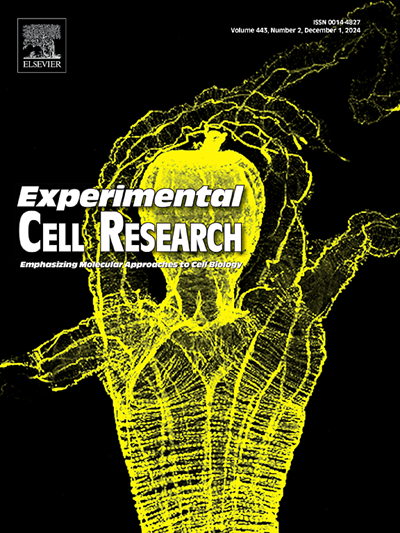H50Q mutation in alpha-Synuclein impairs the insulin signaling pathway and induces neuroinflammation in the Drosophila model
IF 3.3
3区 生物学
Q3 CELL BIOLOGY
引用次数: 0
Abstract
H50Q mutations in the SNCA gene, also known as also known as the alpha-Synuclein (α-Syn), have been causally linked to familial Parkinson's disease (PD). PD is primarily characterized by the progressive loss of dopaminergic neurons in the substantia nigra region of the brain.α-Syn- plays a pivotal role in the formation of Lewy bodies (LB), a prominent pathological marker in PD. Growing evidence has highlighted the involvement of the insulin signaling pathway dysfunction in various neurodegenerative models. This study aimed to explore how the H50Q mutation in α-Syn influences the insulin signaling pathway and the overall lifespan of fruit flies afflicted with PD. It has been established that a mutation in α-Syn affects mitochondrial function and increases oxidative stress, ultimately contributing to the death of dopaminergic neurons. The impairment of mitochondrial function disrupts metabolism and exerts an adverse effect on the insulin signaling pathway. Furthermore, the unfolded protein response of the endoplasmic reticulum (ER) are investigated and observed a decrease in the expression of PERK (Protein kinase R-like ER kinase) during ER stress. These findings confirm the intricate interplay between the insulin signaling pathway and the activation of the PERK-ER stress pathway. However, the degeneration of neurons triggers a neuroinflammatory response, which are found to be mitigated by the improvement of insulin signaling and the PERK-ER stress-related pathway. The results of this studyshed light on the novel regulatory role of PERK within the insulin signaling pathway and suggest its potential as a therapeutic candidate for modulating neuroinflammation in the context of α-Syn -associated PD pathology.
α-Syn突变破坏胰岛素信号通路并诱导α-Syn帕金森病果蝇模型的神经炎症
α-突触核蛋白(α-Syn)基因突变与家族性帕金森病(PD)有因果关系。PD的主要特征是大脑黑质区域多巴胺能神经元的进行性丧失。Α-Syn在路易小体(LB)的形成中起关键作用,是PD的重要病理标志物。越来越多的证据表明胰岛素信号通路功能障碍参与各种神经退行性模型。本研究旨在探讨α-Syn如何影响患有帕金森病的果蝇的胰岛素信号通路和整体寿命。已经确定α-Syn基因影响线粒体功能,突变导致线粒体损伤和氧化应激增加,最终导致多巴胺能神经元死亡。线粒体功能损伤破坏代谢,对胰岛素信号通路产生不利影响。此外,我们还研究了内质网(ER)的未折叠蛋白反应,并观察到内质网应激时PERK(蛋白激酶r -样ER激酶)的表达减少。这些发现证实了胰岛素信号通路和激活“PERK-ER”应激通路之间复杂的相互作用。然而,神经元的退化引发神经炎症反应,这可以通过胰岛素信号和“PERK-ER”应激相关途径的改善来减轻。本研究的结果揭示了PERK在胰岛素信号通路中的新调控作用,并提示其可能作为α-Syn相关帕金森病病理背景下调节神经炎症的治疗候选药物。
本文章由计算机程序翻译,如有差异,请以英文原文为准。
求助全文
约1分钟内获得全文
求助全文
来源期刊

Experimental cell research
医学-细胞生物学
CiteScore
7.20
自引率
0.00%
发文量
295
审稿时长
30 days
期刊介绍:
Our scope includes but is not limited to areas such as: Chromosome biology; Chromatin and epigenetics; DNA repair; Gene regulation; Nuclear import-export; RNA processing; Non-coding RNAs; Organelle biology; The cytoskeleton; Intracellular trafficking; Cell-cell and cell-matrix interactions; Cell motility and migration; Cell proliferation; Cellular differentiation; Signal transduction; Programmed cell death.
 求助内容:
求助内容: 应助结果提醒方式:
应助结果提醒方式:


